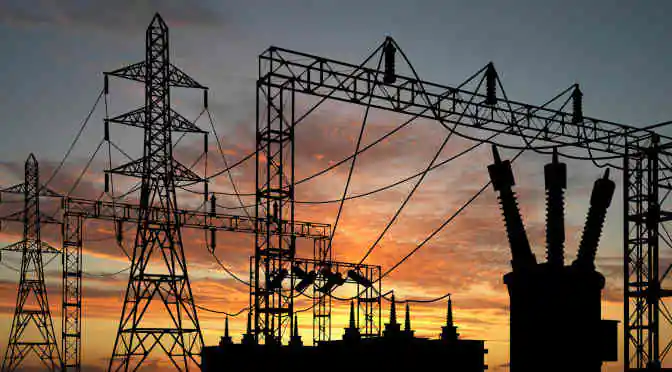In the wake of the massive energy crunch, sustainable energy processes like waste into energy (WtE) have gained a great deal of interest among policy makers, investors, and stakeholders in the global energy sector. Here are the top technologies being adopted to convert waste into alternative energy solutions.
Read: The UNDP Wants to Improve Waste Management By 2030
Thermal Technologies
1) Gasification
One of the most popular thermal technologies, gasification can easily convert low-value feedstocks into high-value products. The process provides a clean energy source for baseload electricity, fertilizers, fuels, and chemicals, thereby reducing the country’s dependence on natural gas and imported oil.
Gasification technology is already being used by the power, refining, chemicals, and fertilizers industries. Industry stalwarts like GE, Royal Dutch Shell, and Siemens Energy have made huge investments in this technology.
2) Depolymerization
Perhaps one of the best ways to deal with plastic waste, depolymerization technology converts waste into liquid energy carriers like fuel oil. One major advantage of depolymerization is that it converts all heavy metals in the waste into stable oxides.
Read: Five unique ways to use recycled plastic
Apart from waste reduction, our industry experts find this technology immensely useful in oil production as well.
3) Pyrolysis
Extremely useful in processing drained sludges, Pyrolysis is a thermal process that degrades organic material without the use of oxygen. Just like gasification, pyrolysis helps in reducing the level of carbon emissions. Lately the technique has also been used to process bio-mass to produce bio-oil.
Non-Thermal Technologies
Along with fermentation, anaerobic digestion is a non-thermal technology that has been widely adopted to reduce the greenhouse effect. Viewed as one of the best replacements for fossil fuels, developing economies are using non-thermal technologies to create low energy cooking solutions and residential lighting purposes.
1) Fermentation
Utilization of yeast and similar microorganisms to break down organic matter and produce ethanol. This involves a number of chemical processes including hydrolysis and distillation. The end product, ethanol, can be blended with gasoline and used in motor vehicles.
2) Anaerobic digestion
Herein, organic matter (waste like animal byproducts and slurries) placed in airtight containers is acted upon by bacteria and biogas is generated as the end product. The latter serves as a clean fuel in the kitchen, and also has applications as an automotive fuel.
Read: Comparison between Anaerobic Digestion and Landfill Technologies in the Biogas Market
Given that by 2040, around 40% of the world’s power will be sourced from renewable sources, it is interesting to know the top companies heading this revolution. Here are the top WtE companies identified by our industry experts.
1. Liquid Light | HQ: NJ, USA
Liquid Light’s core technology is centered on low-energy catalytic electrochemistry to convert carbon dioxide to multi-carbon chemicals. Liquid Light is one of the first companies to develop a catalyst (a combination of water, sunlight, electricity, and other chemicals) to create chemicals out of carbon dioxide. The company is thus reducing the dependency on Petroleum and other non-renewable fuels.
Latest Achievement: Liquid Light collaborated with Coca Cola (KO) to reduce the cost of producing mono-ethylene glycol – one of the major components used to make the company’s plant-based PET plastic bottles.
2. Alphabet Energy | HQ: CA, USA
A leader in thermoelectric technology, Alphabet Energy converts heat to electricity. Its target markets are automobiles and energy generators. With the help of groundbreaking nanotechnology research, the company’s proprietary PowerBlocks serve as a technology platform for waste heat recovery products.
Latest Achievement: Alphabet Energy bagged a two-million-dollar grant from the California Energy Commission for developing the next generation thermoelectric waste heat to power research.
3. ZenRobotics | HQ: Helsinki, Finland
A high-tech company specializing in artificial intelligence (AI), ZenRobotics Ltd. stands right in the intersection of two global megatrends: the revolution of smart robotics technology and the global need for ecological efficiency to fight the waste crisis.
Its ZenRobotics Recycler is the first commercially available robotic waste sorting system. The Recycler relies on artificial intelligence technology in both identifying the valuable raw materials in the waste, and in controlling the robot’s adaptive picking motions.
Latest Achievement: The company has launched its ZRR Sorts Bags as a solution for municipal solid waste.
4. HarvestPower | HQ: MA, USA
HarvestPower specializes in organic waste recycling. It makes most of anaerobic digestion to convert organic food waste into renewable energy and soil enhancement products like fertilizers and mulch.
Latest Achievement: HarvestPower has been named among the top 100 most innovative companies by Global Cleantech.
5. Ostara Nutrient Recovery Technologies | HQ: Vancouver, Canada
Ostara is committed to protecting precious water resources by changing the way cities around the world manage excess nutrients both in wastewater streams and fertilizer runoffs. The company’s nutrient management solutions recover otherwise polluting nutrients, phosphorus and nitrogen from municipal and industrial water streams, and transforms them into a continuous-release, eco-friendly fertilizer marketed as Crystal Green.
Latest Achievement: The company has created a technology to convert sewage into a reliable, low-cost feedstock for chemicals and other materials.
Conclusion: Waste to energy has emerged as a deliberate attempt to save our ecological cycles. There is no doubt that WtE is the best energy solution for a greener tomorrow.



